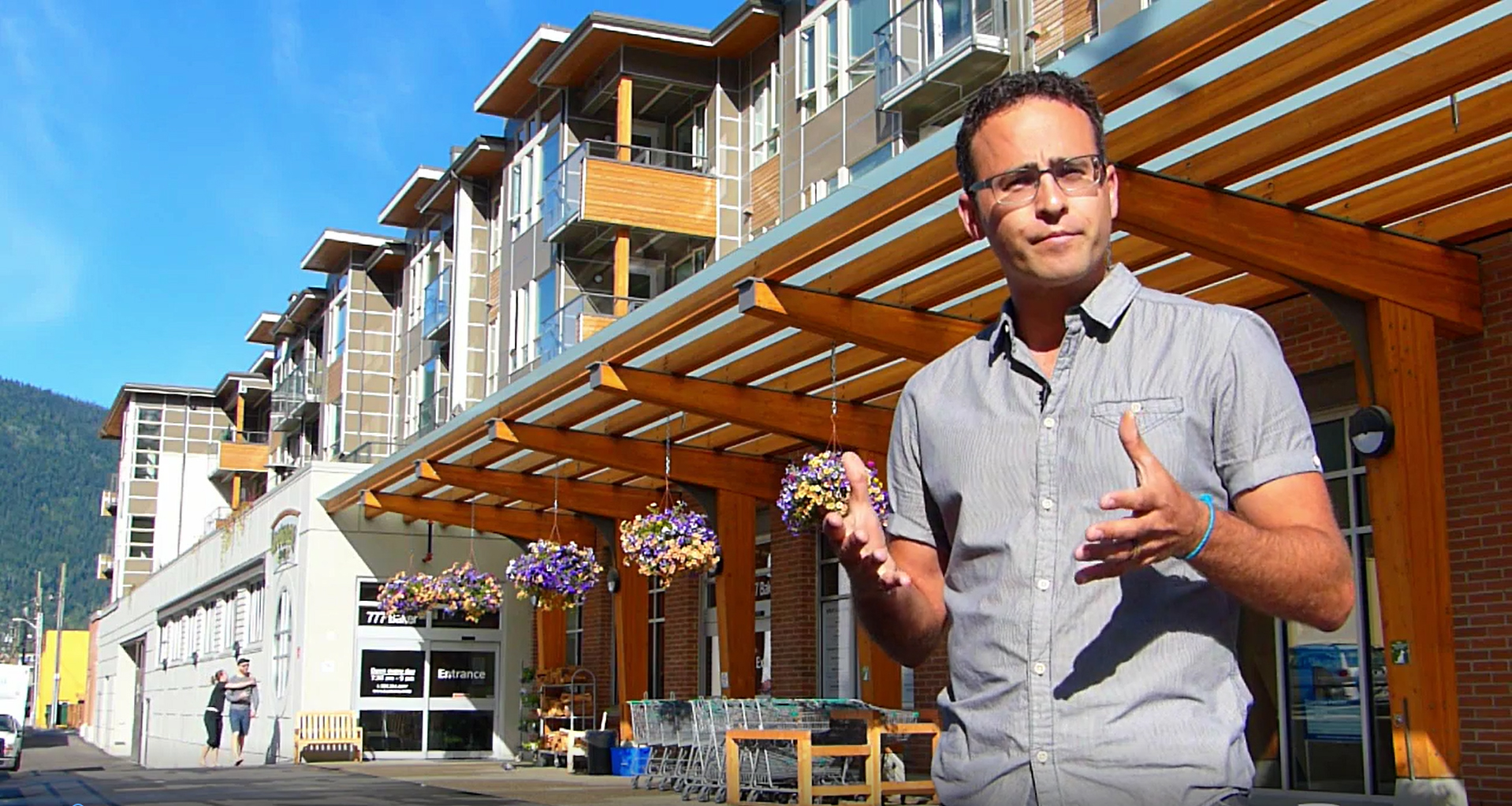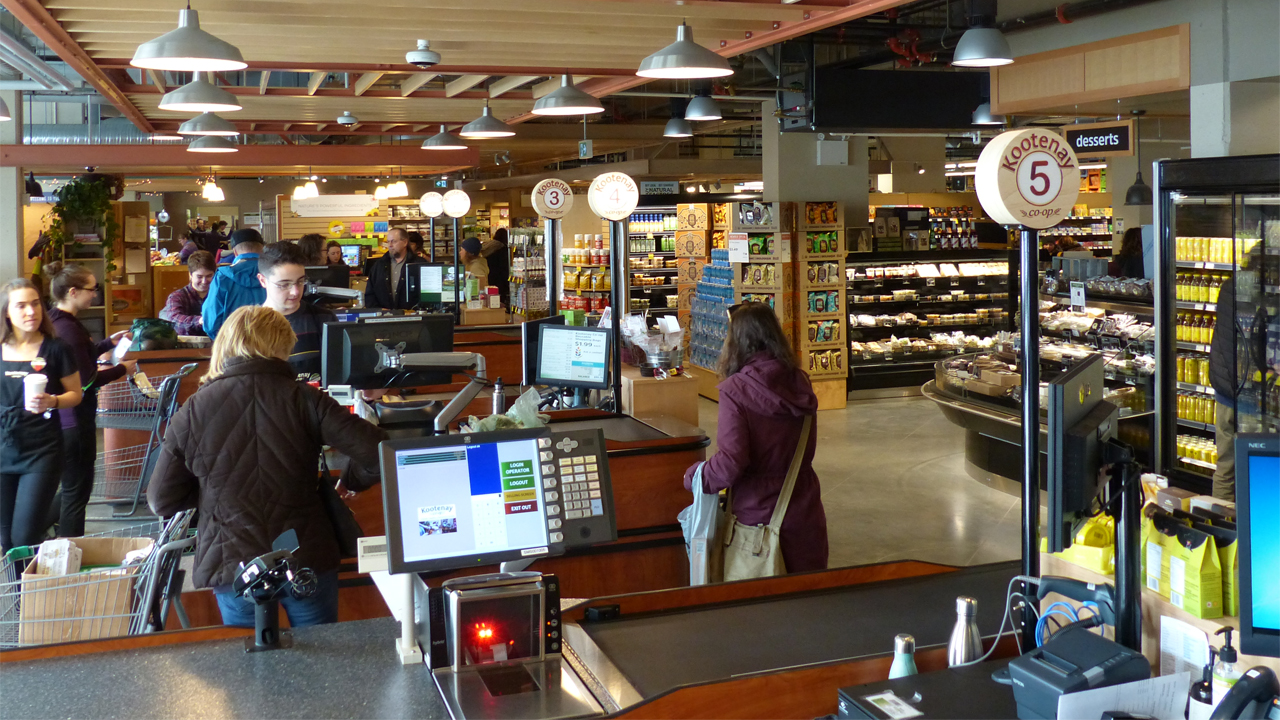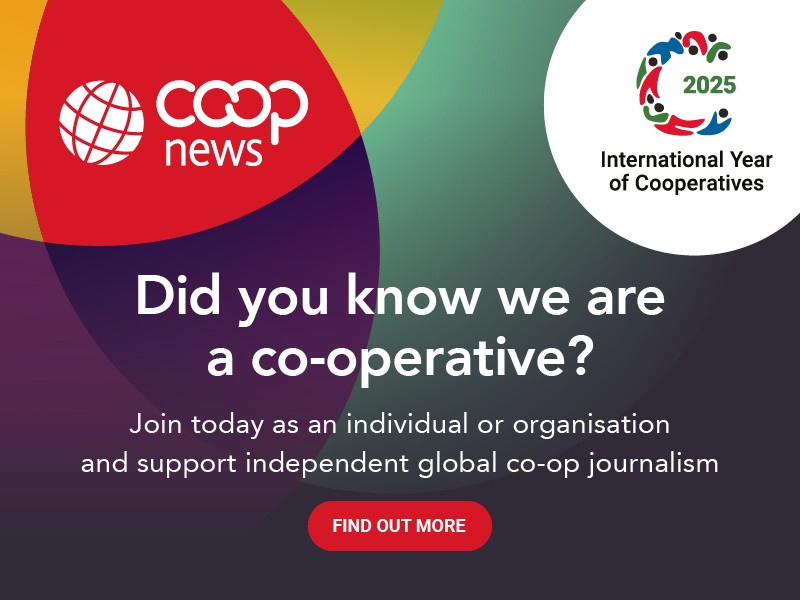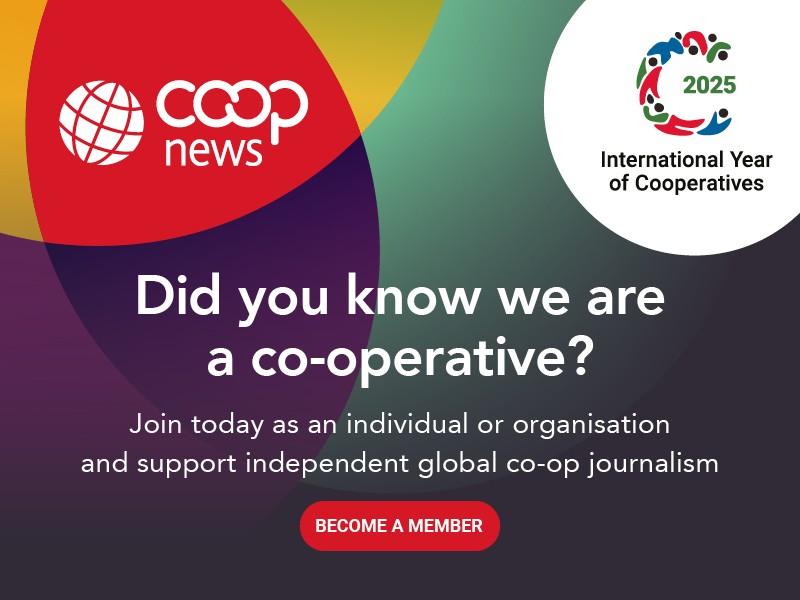“If we want to have a long-term grocery store that supplies communities with good food, the most resilient model is the co-op model,” says Jon Steinman, author, broadcaster and member of the Kootenay Co-op, a consumer food co-op in Nelson, British Colombia (BC).
Fifteen years ago Mr Steinman moved to BC, starting a show about food at the local co-op radio station; Deconstructing Dinner evolved into a television and web series exploring the realities of where food comes from. He then joined the Kootenay Co-op, where he spent ten years on the board and witnessed first hand the positive impact co-ops can have on the local economy and community.
“Over those ten years, our big focus was to build a new store,” he says. “We took the plunge and became the developer of a four-storey building, which became the city’s largest new development in recent history.”
The top three floors of the building now comprise 54 residential units, with the ground floor occupied by commercial units. Here, the Kootenay Co-op sits in a space three times the size of its previous location, with a full sized commercial kitchen, deli, cheese shop, frozen fish section and in-store restaurant.
“We moved in in December,” says Mr Steinman. “Through the whole process, I was inspired by how a local food store can engage in significant development in a community. It’s brought more engagement to downtown – and showed the power of a grocery store to support a local economy. This was a story that wanted to be told.”
Mr Steinman plans to tell this story through a new book, Grocery Story, currently being funded through Kickstarter, which will look at how local economies are positively impacted by community food co-ops.
As well as looking at the challenges they face, Grocery Story will include profiles of food co-ops in the US and Canada and explore the unique ways they engage with communities – from operating their own farms and non-profits to educational engagement with members and local schools.

The ‘third wave’ of food co-ops
Alongside Kootenay, the city of Nelson (population 10,230) has three large grocery stores, which are owned by or engaged with the 2nd, 4th and 21st richest Canadians respectively.
“The beginning of the book will be a deconstruction of this dominant grocery sector, looking at the power these nationals and multinationals assume within the global food system,” says Mr Steinman. “It will also explore the strategies employed by supermarkets that consumers aren’t aware of – such as the fees producers have to pay to get onto shelves.”
These “slotting” fees encourage premiums for prime shelf space (ie at eye level), which is reserved for the highest bidders, he explains. “This concentration mirrors that seen in manufacturing, and limits access to market for smaller producers. It’s far more difficult for local producers to access this market with a single product when they’re competing with multinationals.”
In north America, this is being challenged by a “third wave” of food co-ops.
“The first wave was out of the depression era, and the second was the natural food co-ops that emerged in the 1970s. Since the early 2000s, a third wave has been emerging out of the local food movement. There has been a succession of strong vibrant farmers markets, direct sales from farmers, home gardening schemes and other easy-to-implement initiatives; the next initiative is through grocery co-ops.
“People are starting to understand that privately owned stores are not as resilient as ones owned by the people who use them.”

The benefits of going local
National Co+op Grocers – the business services co-operative for retail co-op grocery stores – has already done work tracking the benefits of using the co-op model. In north America, grocery co-ops have a higher rate of organic produce sales (82% compared with 12% for conventional privately or investor-owned stores), higher average earnings ($14.31 compared with $13.35) and better rates of recycling (74% of food waste against 36%).
Of greatest interest to Mr Steinman is the local impact of co-ops. Consumer-owned co-ops work with an average of 157 local producers (65 for conventional stores), around 20% of products sold are locally sourced (6% for conventional stores) – and 38% of revenue is spent locally (compared with 24%).
At the Kootenay Co-op, where annual sales top C$14m, $3.5 of purchasing is from local suppliers – with $2m of that directed to farmers. “The book will also share the stories of some of these suppliers,” says Mr Steinman.
“When local producers sell to the local co-op, where does that money then go within the local community, from hairdresser to lawyers? Through co-ops, we can see food dollars recirculating through local communities.”
- Find out more about Grocery Story and the Kickstarter project here.

